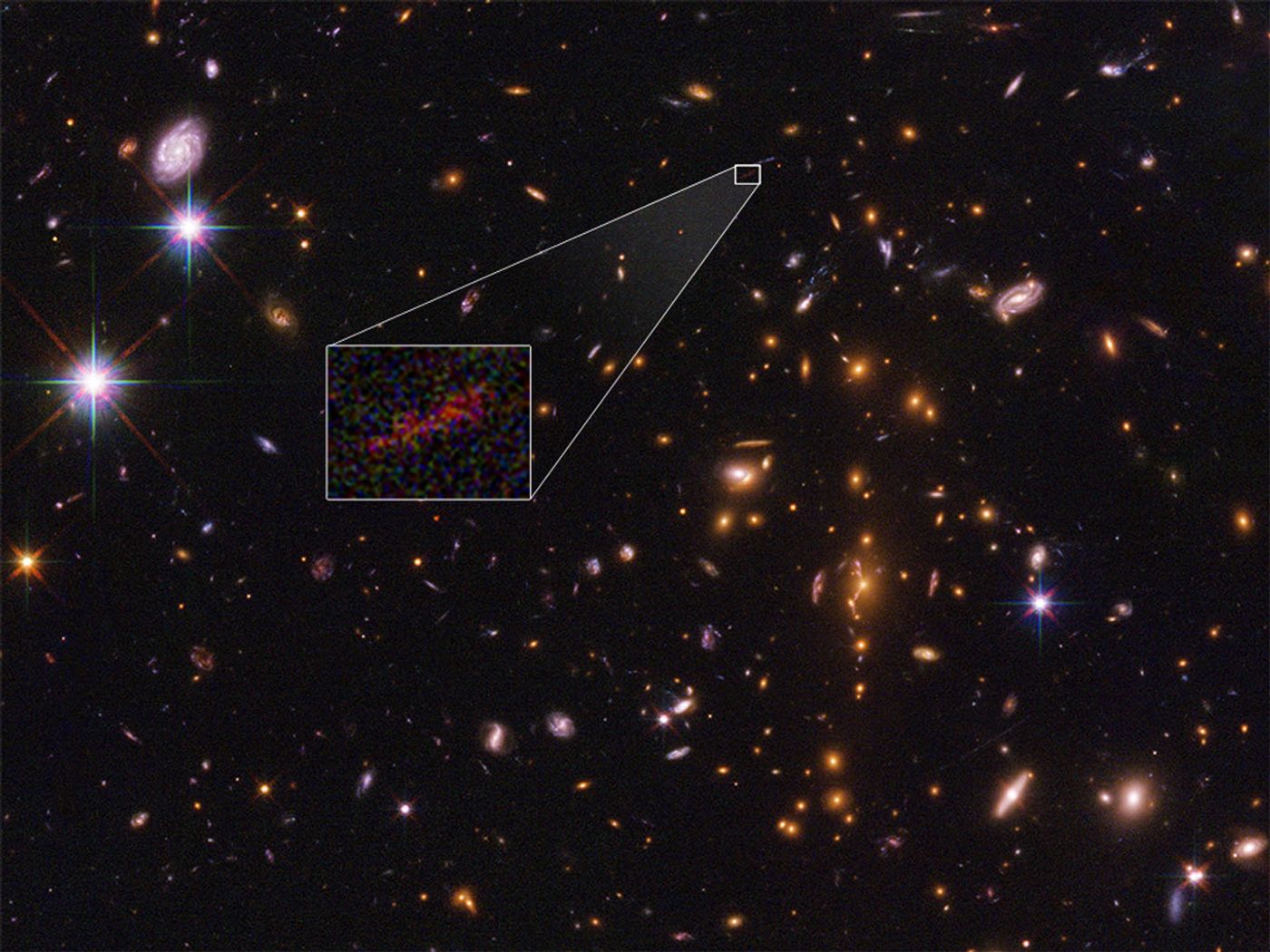Lucky Hubble Image Captures Unprecedented View of a Distant Galaxy
Some astronomical objects are so far away that even the most powerful space-based observatories can’t discern them clearly. On the other hand, astronomers found themselves in awe after capturing a somewhat lucky break with the Hubble Space Telescope.
Image Credit: NASA/ESA/B. Salmon (STScI)
The image you see above depicts a faint galaxy known as SPT0615-JD as it looked just 500 million years after the Big Bang, and astronomers say it’s one of the most distant galaxies known to exist.
Most objects of this caliber typically appear as tiny red dots in Hubble’s images when they’re this far away, but a convenient gravitational lensing event taking place at the time of the observation gave the space telescope an unexpected and unprecedented view of SPT0615-JD.
"Pretty much every galaxy at that distance is an unresolved dot... it's kind of a matter of luck to get a galaxy that's lensed in just the right way to stretch it out and get that much detail - it's a pretty nice find," said study lead author Brett Salmon in an interview with BBC News.
Related: Hubble spies on two colliding galaxy clusters
Without the gravitational lensing effect, astronomers couldn’t have discerned SPT0615-JD in such detail. One might say Hubble was in just the right place at the right time.
Given that the Big Bang occurred almost 14 billion years ago, this means we’re seeing SPT0615-JD as it appeared more than 13 billion years ago. We see it that way because light only travels so fast; nevertheless, the universe continues to expand rapidly.
According to NASA, SPT0615-JD spans 2,500 light-years across and possesses just 1/100th of the Milky Way's mass. While we don't know a whole lot about the galaxy, astronomers hope that the clarity in this image might shed light on its characteristics in due time. Furthermore, it might even help validate existing galaxy evolution theories.
We can only imagine the wealth of information that space experts might gather from this image, but it ought to be interesting to see what pans out of it.









